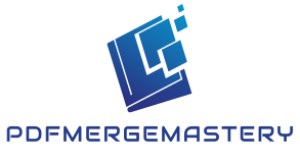Combining PDF files in batch mode is an effective method to save time and simplify the process of working with documents. In today’s world, where information is often presented in PDF format, there is a need to combine multiple files into one for easier data management and transfer. Batch merge PDF files provides the ability to combine multiple documents simultaneously, which significantly reduces the time spent on this process.
Advantages of Batch PDF Combination
Batch PDF combination stands out as a time-saving and organization-boosting solution for individuals and organizations dealing with numerous PDF documents. Let’s delve deeper into the specific advantages of adopting batch PDF combination:
- Time Efficiency: The time efficiency gained through batch PDF combination is particularly evident when dealing with large volumes of documents. Manually merging files one by one can be a tedious and time-consuming task, especially when the number of files runs into the dozens or hundreds. Batch processing allows users to select multiple files at once, initiating the merging process in a single operation. This significantly reduces the time and effort required, enabling users to focus on more critical tasks.
- Organizational Benefits: Beyond time savings, batch PDF combination enhances document organization. In professional settings, where projects often involve collaboration and the exchange of multiple document drafts, managing individual files can lead to confusion. Batch merging simplifies this by consolidating related documents into a single, cohesive file. This consolidated approach facilitates better organization, making it easier to store, share, and retrieve documents.
- Consistency in Presentation: Batch PDF combination ensures consistency in document presentation. When dealing with content that spans multiple files, maintaining a cohesive narrative or creating a comprehensive report is crucial. Merging files in batches guarantees that the sequence and formatting of pages remain consistent throughout the combined document. This is especially valuable in situations where a polished, unified presentation is essential, such as creating manuals, educational materials, or project reports.
- Customization and Configuration: Many batch PDF combination tools offer customization options, allowing users to configure settings according to their specific needs. This may include choosing the order of files, adjusting page orientation, and specifying page size. The ability to tailor these settings during the merging process adds a layer of flexibility, accommodating diverse document requirements.
- Reduced Error Margin: Batch processing minimizes the risk of errors that may arise from manually combining files. When merging files individually, there is always the potential for oversight, leading to misplaced pages or incorrect order. Batch PDF combination eliminates this error margin by automating the process, resulting in a more reliable and accurate outcome.
In conclusion, the advantages of batch PDF combination extend beyond mere time savings. This approach brings efficiency to document management, improves organizational structure, ensures consistency in presentation, and offers customization options, ultimately contributing to a more streamlined and error-resistant workflow. Whether dealing with project documentation, collaborative reports, or any other scenario involving multiple PDF files, the benefits of batch PDF combination make it a valuable tool for users seeking enhanced productivity and document control.
Steps for Batch PDF Combination
The process of batch PDF combination simplifies the consolidation of multiple files into a single, cohesive PDF document. Here is a comprehensive overview of the steps involved.
In the initial step, users must thoughtfully select the PDF files they intend to merge. This involves the simultaneous selection of multiple files, typically achieved by holding down the Ctrl key (or Command key on Mac) while clicking on the desired files. The order of selection often determines the sequence of pages in the final merged document.
Following file selection, users need to employ a PDF editing tool that supports batch processing capabilities. Popular choices include tools like Adobe Acrobat, PDF-XChange Editor, or online platforms such as Smallpdf or MergePDF. Once within the chosen tool, users locate and access the functionality to merge or combine files, often denoted by terms like “merge,” “combine,” or “join.”
Once the selected files are loaded into the PDF tool, users may be provided with options to arrange them in a preferred order. Some tools offer a visual preview window, facilitating the organization of pages before initiating the merge. Additionally, configuration options such as page orientation, size, and other document settings may be available for customization according to specific requirements.
With the files selected, arranged, and configured, users can proceed to execute the merge process. This is typically initiated by clicking a designated button, such as “Merge” or “Combine.” The PDF tool then undertakes the operation, merging the selected files into a single document. The duration of this process varies depending on factors like file size and the efficiency of the tool but generally takes only a few moments.
Technical Aspects of Batch PDF Combination:
Batch PDF combination involves several technical aspects that contribute to the seamless merging of multiple files. These technical considerations ensure the integrity of the original documents and facilitate a smooth user experience.
- Page Numbering: One crucial technical aspect is the management of page numbering. As files are combined, the PDF tool must accurately handle the page numbers to reflect the correct sequence in the final document. This process requires precise algorithms to avoid page order discrepancies and maintain a coherent structure.
- Compression: Efficient compression algorithms play a vital role in optimizing the file size of the combined PDF. Compression reduces redundancy within the document, ensuring that the final file remains manageable without compromising the quality of the content. This is particularly beneficial when dealing with large or graphics-heavy files, as it minimizes storage requirements and facilitates faster file transfer.
- Security: Security is another technical consideration in batch PDF combination. PDF tools often provide options to secure the merged document through features like password protection and encryption. These security measures help protect sensitive information within the PDF, ensuring that only authorized individuals can access and modify the content.
- Metadata Handling: Batch PDF combination tools must effectively manage metadata from individual files. This includes details such as document properties, authorship information, and creation dates. Ensuring that metadata is appropriately handled guarantees that the merged PDF retains accurate information about each original document.
- Cross-Platform Compatibility: Technical considerations also extend to cross-platform compatibility. The PDF format is designed to be platform-independent, allowing users to view documents consistently across different operating systems and devices. Batch PDF combination tools must maintain this compatibility, ensuring that the merged document can be seamlessly accessed and viewed on various platforms without loss of formatting or functionality.
- OCR Integration: Optical Character Recognition (OCR) integration is a technical aspect that allows batch PDF combination tools to recognize and extract text from scanned documents or images. This feature enhances the tool’s capability to handle non-text PDFs, ensuring that the content is accurately included in the merged document.
| Technical Aspect | Description | Additional Considerations |
| Page Numbering | Accurate handling of page numbers to reflect the correct sequence in the merged document. | Algorithms for precise page order, avoiding discrepancies. |
| Compression | Efficient compression algorithms to optimize file size without compromising content quality. | Balancing compression ratios to reduce file size while maintaining content integrity. |
| Security | Implementation of security features such as password protection and encryption for document protection. | Options for password management, encryption strength, and access control. |
| Metadata Handling | Effective management of metadata, including document properties, authorship information, and creation dates. | Preserving original document information to maintain accuracy in the merged PDF. |
| Cross-Platform Compatibility | Ensuring that the merged PDF remains compatible across different operating systems and devices. | Testing compatibility on various platforms, ensuring consistent viewing and functionality. |
| OCR Integration | Integration of Optical Character Recognition to recognize and extract text from scanned documents or images. | Enhancing the tool’s ability to handle non-text PDFs and improving text extraction accuracy. |
| User Interface Design | Design elements influencing the ease of use and accessibility of the batch PDF combination tool. | Intuitive layout, clear instructions, and user-friendly features to enhance the overall user experience. |
Scenarios of Use
In professional settings, it streamlines collaboration by merging individual contributions into comprehensive project reports. This proves especially useful for business proposals or academic projects where multiple team members contribute to a collective document.
For efficient document management, organizations utilize batch PDF combination to create well-organized and searchable archives. It simplifies the consolidation of invoices, receipts, contracts, and related documents, ensuring a systematic approach to archiving and retrieval.
Professionals benefit from time savings and consistency in presentations by using batch PDF combination to seamlessly integrate slides from different sources. This is advantageous in a range of scenarios, from conference presentations to internal meetings.
In the creation of technical manuals, user guides, or instruction booklets, batch PDF combination streamlines the compilation of content spread across various files. It caters to industries where comprehensive documentation is crucial for effective communication.




